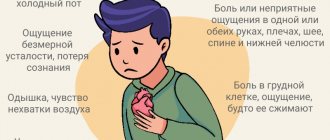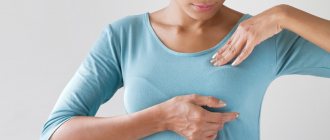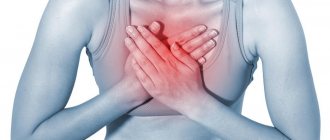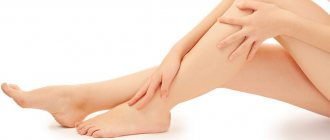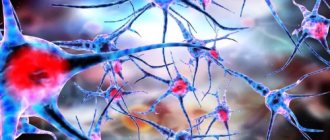Knees hurt after running
The study of knee joints was the primary task of scientists involved in the study of cyclic sports. Therefore, the causes of knee pain have long been studied and classified.
The main causes of pain in the knee joint:
- Damage to the round cartilage, which in medicine is called the meniscus. Performing sudden movements during training activities can cause the ligaments that attach the cartilage to other cartilage to break. The result is pain, which can intensify after physical activity.
- Ligament damage that occurs due to high stress on the knees. Common in jumping sports where the impact force on the knees is highest. However, injury can also occur as a result of running activities.
- The patella (kneecap) can become unstable when the ligaments are damaged. As a result, the patella may pop out. However, pain can occur without the kneecap popping out.
- Problems with blood circulation in the knees can also cause pain after running. Such pain goes away after some time after exercise, but systematically occurs as a result of physical activity.
- Pathological diseases: arthritis, arthrosis, chondromatosis.
The appearance of painful sensations can occur not only due to pathologies, but also due to improper running with impaired movement technique. For example, poor foot placement not only causes ankle injuries, but can also cause knee damage from impact impacts while running.
You can mitigate the consequences of jogging by mastering the technical elements of running and using special shoes, which have different soles depending on the surface. Regular jogging in sneakers is highly not recommended, especially since there are sneakers that are good at absorbing impacts to the joints.
If knee pain regularly appears after running, you should consult a doctor, since the likelihood of pathologies is extremely high. In this case, the pain will not go away on its own, and random selection of ointments will only mask the problem and will not stop its development.
Causes of chest pain
Although chest pain is not always due to cardiac problems, these problems can rightly be put in first place.
Nature of pain in heart disease :
- Angina pectoris is of a compressive nature, radiating to the shoulder, and occurs with increased stress, for example, when walking quickly or climbing stairs.
- Heart attack - prolonged (more than 20 minutes) intense pain in the chest of a pressing nature, shortness of breath, fear of death. Urgent assistance required.
- Myocarditis is not severe, but pressing, combined with an accelerated heartbeat.
- Pericarditis is acute, aggravated by a horizontal position of the body.
- Cardiomyopathy is moderate and appears after exercise and eating.
Heart pain is usually difficult to localize; in cases of slowly progressing diseases, it is periodic.
Problems with the respiratory system cause different types of chest pain:
- Bronchitis is intense, worsens with coughing.
- Pulmonary embolism is acute, similar to a heart attack, and requires immediate medical attention.
- Collapse of the lung - accompanied by severe shortness of breath.
- Pneumonia - stabbing, worsening with inhalation.
- Pleurisy accompanies every breath and becomes even more noticeable when coughing.
- COPD – pressing with wheezing and cough.
- Lung cancer – irregular, may be accompanied by cough with sputum and hemoptysis.
It is important to know that there are no pain receptors in the lungs, so the muscles in the chest hurt from tension or in the event of an inflammatory process. The sensations may be localized in the middle or aggravated by inflammation.
Causes and types of chest pain due to problems with the digestive system :
- Disorders of the esophagus - appear during the process of swallowing.
- Diseases of the gallbladder and pancreas are accompanied by painful sensations in the upper abdomen.
- Gastroesophageal reflux - accompanied by heartburn: a burning sensation behind the sternum.
- Gastritis, stomach ulcer - dull aching pain on the left under the ribs or on the left in the sternum.
Musculoskeletal pain in the chest area causes rib injuries, scoliosis, cartilage diseases, thoracic osteochondrosis, the symptoms of which are very similar to a heart attack. A pinched nerve is accompanied by numbness in the problem area. Dull muscle pain of unknown origin can persist for a long period of time. They are safe, but it is important to exclude life-threatening causes.
Chest pain also occurs during panic attacks and intercostal neuralgia, which is characterized by a pinching sensation in the middle of the sternum. In women, painful conditions can be provoked by diseases of the mammary glands and cyclical changes in hormonal levels.
Abdominal pain after running
Abdominal pain may occur below or under the ribs. The pain may also occur with a burning sensation, tingling or nausea. Despite the difference in the localization and course of painful sensations, the cause is most often one.
After running, the stomach may hurt due to the outflow of blood from the intestines, which disrupts the normal functioning of the gastrointestinal tract and, as a result, the digestive system is not able to fully cope with the load placed on it.
The second option for the occurrence of pain appeared relatively recently. New Zealand scientists have suggested that the cause of abdominal discomfort after running may be an increase in fluid content that accumulates in the intestinal area. As a result, the intestines increase in volume and begin to put pressure on the diaphragm.
avoid symptoms by following simple rules:
- Limit your food intake 2-3 hours before your run so that by the time of exercise your digestive system does not need to absorb the foods you eat.
- Drink minimal amounts of water during exercise. It is enough to take 1-2 sips.
- Master your breathing technique while running. Try to pull in your stomach and take 2-3 quick breaths and exhalations to increase the tone of your abdominal muscles.
If a feeling of nausea appears as a result of running activity, then the reason lies in the first option (blood outflow from the digestive system) or the presence of specific diseases (exacerbation of gastritis, ulcer formation). In this case, consult a doctor and undergo an abdominal ultrasound.
Chest pain when running
Sometimes when running you experience pain in the chest. They may be pressing or have a burning sensation. Typically, such pain occurs at the beginning of a run at a high intensity of the starting part.
If the pain is pressing , then the cause is an increase in the volume of internal organs due to the increased blood content in them. Enlargement of internal organs during jogging occurs constantly, but pain does not always occur. The occurrence of pressing sensations indicates that the chest has not had time to expand fully and the organs are pressing on the ribs. As a result, a feeling of pressure appears on the sternum.
For the same reason, tingling in the side may occur while running, when the left (spleen) or right (liver) side hurts. A stabbing sensation occurs when, due to a sudden load, the organs increase in volume and begin to put pressure on the serous membrane in which they are located.
burning sensation may indicate that jogging began less than 1 hour after eating. In this case, the burning sensation occurs due to the active work of the esophagus and duodenum.
In rare cases, the appearance of painful sensations in the chest when running indicates the presence of diseases. Here it is worth using a simple rule: if the problem recurs, you need to consult a doctor.
How to relieve pain. First aid
If, when moving, pain appears in the chest on the right, you need to understand how to alleviate the condition. First of all, provide yourself with peace and opportunity to relax. A warm bath and gentle massage on the area where the pain is also helpful. Such methods are optimal if the cause of pain on the left side is spinal pathology. Medical assistance may consist of taking non-steroidal anti-inflammatory and analgesic drugs. The most important thing is to use pain relief methods only to alleviate the condition before visiting a doctor, but under no circumstances use them constantly, ignoring the need to visit a doctor.
Groin pain after running
The appearance of a painful sensation in the groin area after running indicates that the pelvic area is actively working during the exercise. During running, the blood content in the groin area increases due to constant movement (repeating the cycle of steps with the left and right legs) in this area.
When, after completing the exercise, the blood begins to flow back into the blood stores (liver, spleen, skin) and its content decreases, painful sensations may occur in the groin, sometimes radiating to the inner thigh. Something similar is observed in men after sexual arousal. As a treatment, it is recommended to take a cool shower.
However, there are also pathological causes of pain, so if the phenomenon occurs repeatedly, it is recommended to consult a doctor depending on gender. Pain in the thigh in the groin area indicates the possible presence of pathology.
Causes of rib pain
Pain on the left or right under the ribs can have a different nature, as well as the reasons that cause it. It can be strong and almost imperceptible, aching or sharp, occurring at certain moments or continuous. In almost every case, the cause of pain may be a disease that develops in the chest area.
At CELT you can get advice from a specialist algologist.
- Initial consultation – 4,000
- Initial consultation with the head of the Pain Clinic - 4,500
Make an appointment
Chest injuries
Chest injuries usually include fractures or bruises of the ribs. Fractures are characterized by ruptures of bone tissue and cartilaginous joints of one or more ribs. Depending on the injury, pain symptoms may be constant, aching, or acute and intense.
Bruises are characterized by mild pain, which is accompanied by swelling and the appearance of a hematoma in the area of injury. As a rule, pain symptoms disappear after seven to ten days. Fractures require mandatory diagnosis in order to exclude the possibility of injury to the soft tissues of the lung or other internal organs. Depending on the side of the injury, the pain can be localized on the right or left under the ribs or between them. Its intensity and duration depend on how severe the injury was.
Intercostal neuralgia
Pain between the ribs along the nerves can occur due to the following diseases:
- osteochondrosis of the thoracic spine;
- vertebral protrusion;
- intervertebral hernia.
Attacks in the form of shooting pain, similar to an electric shock, occur due to pinched or irritated nerve roots, and their appearance can be triggered by the following factors:
- hypothermia;
- penetration of infection;
- exercise stress;
- getting a back injury.
The pain becomes stronger with strong inhalations/exhalations or attempts to change body position.
Costochondritis
Costochondritis (or, as it is also called, Tietze's syndrome) is a disease in which thickening of the cartilage tissue of the ribs occurs, leading to their pain. Pain is not localized in one place and can spread to the entire sternum. They can be quite strong and appear brighter with sudden movements, deep inhalations/exhalations or coughing. Pain may be accompanied by:
- local edema;
- an increase in temperature in the area of the pathological process.
It appears suddenly and in its manifestations is comparable to an angina attack.
Angina pectoris
Angina is characterized by constant, pressing pain behind the sternum and sometimes between the ribs. It is localized in the retrosternal region and can spread to the left side of the neck, left arm and left side of the chest and may be accompanied by:
- heart rhythm disturbances;
- feeling of fear.
Other reasons
In addition, pain in the ribs can occur with the following diseases:
- malignant neoplasms (in particular, osteosarcoma of the ribs) are characterized by dull pain at the beginning of the disease, which becomes more and more pronounced as it develops;
- fibromyalgia - pain occurs when trying to raise your arms or turn your torso;
- pleurisy - pain symptoms manifest themselves with coughing and deep inhalations/exhalations;
- herpes zoster - characterized by intense pain under the ribs in the right or left side, which is accompanied by itching or burning.
Another reason is hypertonicity of the pectoral muscles, which occurs as a result of intense physical activity. The pain in this case increases and is localized in the intercostal space.
More about fibromyalgia
Foot pain after running
The occurrence of pain in the foot may indicate a structural disorder or damage to the muscles and ligaments. As a rule, pain in the foot occurs due to flat feet of the 1st degree, when the catalyst for pain is active physical activity.
For flat feet, it is recommended to use special shoes that follow the pronation of the foot. You can’t buy these shoes in a regular sports store, so you’ll have to place an individual order.
The second type of pain may be a violation of the integrity of ligaments and muscles. In this case, there is a chance that the problem will go away on its own. If a painful focus is observed in the heel and you are at puberty, then the reason is precisely the maturation of the body. If the body has long been formed, then you should consult a doctor.
Paying attention to your health is the key to long and painless runs. Treat your body with due attention and try to understand the cause of unpleasant sensations.


